Water Heroes of Minnesota
Ever wondered why people get involved in defending clean water? Meet some of the Water Heroes who give their time and commitment to protect Minnesota waters, health, and climate. Thank you to all of our supporters, volunteers, experts, and board members who help make WaterLegacy what it is today!
Gallery of WaterLegacy’s Water Heroes
Click on a name to read that hero’s story!
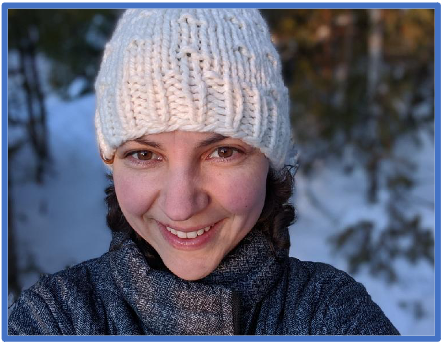
Clare Shirley (Board Member)
Clare Shirley, owner of Sawbill Canoe Outfitters and WaterLegacy Board Member, relies on clean water for her family business.
“I was born in Grand Marais, right on the shores of Lake Superior, grew up on the edge of the Boundary Waters Canoe Area Wilderness, and spent my youth going back and forth between the two. Later, I moved out to Montana, and spent about 10 years there, for college, law school, and working as an attorney. My time there opened my eyes. Growing up, I had always taken clean water for granted, and I was struck by the lack of pristine water elsewhere. In some places in Montana though there may be a river running through your town, you probably can’t drink the water. Some of the water you can’t even swim in. I grew up drinking water straight out of the lake that I lived on. I still do. I’ve never gotten sick. In Montana, I realized that to be able to do this is something really unique. While working with the federal court systems on environmental law cases, it dawned on me that water protections are fragile, or even nonexistent. There’s a misconception that we have these ironclad laws that agencies must follow to protect clean water. However, I learned that clean water is constantly under attack from multiple angles. But there’s been a small group of dedicated people over the generations that have worked really hard to fend off these attacks and keep clean water protected. I grew up working in my family’s business, Sawbill Canoe Outfitters, founded by my grandparents right on the edge of the BWCA on Sawbill Lake. My parents were running the business, and when they were ready to retire, my husband and I sold our house and all of our possessions and drove from Montana to Minnesota to run the business. This has been a really meaningful way to be connected to this place and live the day-to-day fight for clean water. My business relies completely on 100 percent clean, pristine water. Without clean water, my business would fail and there would be no wilderness, as we know it. And that’s a scenario I simply cannot accept.”
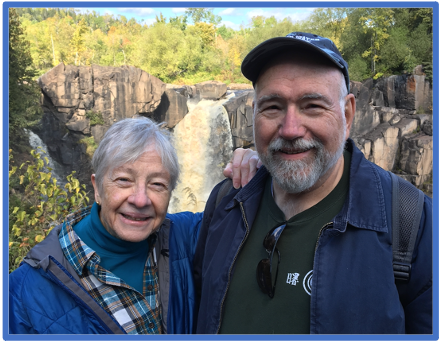
Nancy Giguere (Volunteer, Editor)
Nancy Giguere, our volunteer who lends her writing skills to the cause of protecting water, is the one behind many of our wonderful emails and website content.
“I grew up in Arizona, a dry environment where copper mining is common. Although Arizona is not a water-rich environment like Minnesota, copper mining has left a legacy of polluted water near many of the mine sites in the state.
“When you grow up in a dry country, you understand the importance of water. But no matter where you live, you can’t take it for granted. For example, my husband, Bruce Tyler, grew up near Cleveland, and remembers when the Cuyahoga River caught fire in 1969. That event called national attention to water pollution, and led to the creation of the Clean Water Act. Ironically, over 50 years later, WaterLegacy is fighting to have mining pollution regulated by that very same law.
“I first became involved with WaterLegacy through my son Matt, one of the founders. Because I was a freelance writer, he asked me to edit a few documents. Eventually, I began volunteering on a regular basis. I’ve helped with grant applications, e-blasts, and other material. This past summer I helped revamp the website.
“I’ve always felt that WaterLegacy’s work was vital, but once I became a grandmother, I became even more passionate about it. I want my grandson to grow up in a world where the water is clean, not one where he has to worry about whether it’s too polluted to drink.”
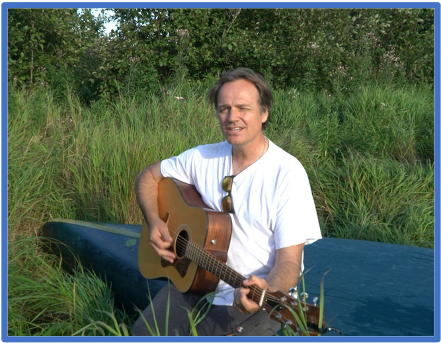
Tim Frantzich (Board Member, Musician)
Tim, AKA Brother Timothy, brings heart, soul, and tunes to the organization by writing songs and assisting with concert events.
“Being born and raised here in Minnesota, as far back as I can remember I would go up to the Boundary Waters, Grand Marais, and the north shore of Lake Superior. That place is kind of a holy and important space. I would often times call Lake Superior the soul of this area and North America as a whole, as it has such a strange, beautiful feeling around it. The feeling is so different than any other lake I’ve been around. I’ve even written songs with themes from Lake Superior. I just really love the Great Lakes and North Woods, so when I started to hear about PolyMet mine proposals, I started to check into it more. On my own, I started organizing an event at the state capitol’s rotunda where we would sing some songs against the PolyMet mine. I thought, “Who could I get to talk at this thing, who really knows their stuff?” Paula Maccabee’s name came up, so I wrote to her and she was very generous to come talk at the event. This was all bubbling up around three years ago and resulted in about 20-30 of us singing at the capitol. From that time on, I knew of Paula and WaterLegacy. We wrote the song “There is Only Us” dedicated to the PolyMet situation. And then once we did that, WaterLegacy got more interested in an artistic component on the board. The WaterLegacy crew invited me to canoe in to where the PolyMet site would be; it stands out as a pivotal moment. Just to see it and be up in that country, wow. It even turns out that my family has land just 17 miles from the proposed PolyMet site.”
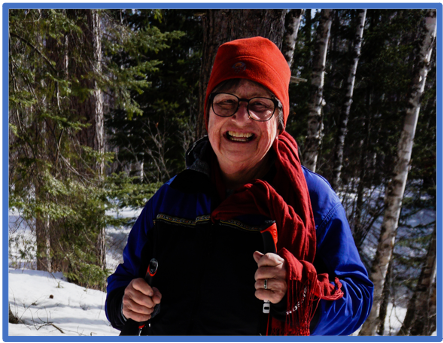
Jan Keough (Board President)
WaterLegacy’s Board President, Janet Keough, transitioned from research retirement to clean water advocacy.
“I spent my entire adult life studying wetlands and waterways. My favorite ecosystems of all time are boreal forests, peatlands, and Great Lakes coastal wetlands. When I retired from research and public service, WaterLegacy was a chance to give back in an advocacy way, because I was getting really disturbed by how wetlands were being abused. What initially drew me in to WaterLegacy was protection for wild rice. Wild rice is one of my favorite aquatic plants, it’s so unique, as they’re one of the few plants that germinate underwater every year, which means that wild rice is especially sensitive to nutrients in the water and sediment and to water clarity that can be affected by pollution. That’s very unusual for plants! It’s really a fantastic part of aquatic ecosystems, and I grew aware of WaterLegacy when they were trying to protect wild rice through defending the Minnesota sulfate standard.
“As I got on WaterLegacy’s Board, I realized WaterLegacy was trying to protect whole watersheds, especially the St. Louis River. It has so many amazing peatlands, which are the kind of wetlands I love. WaterLegacy may be a small organization, but it has laser focus on these ecosystems and protecting water quality, plus the indigenous communities that depend on them. I’m really proud to be part of WaterLegacy, especially because they use facts, science, and law.”
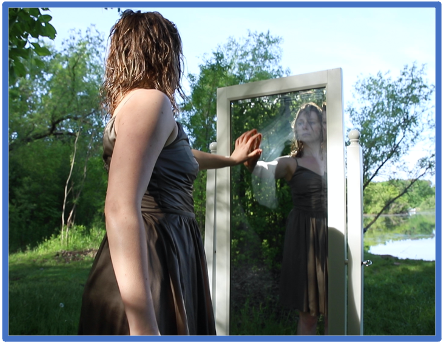
Kendall Kramer (Volunteer)
If you’ve ever visited one of WaterLegacy’s tabling events, you may have talked about sulfide mining with Kendall.
“My entire family went on a trip to the Boundary Waters when I was a teenager, and it opened my eyes to the pristine natural beauty of water and land. Drink water straight from the lake?! I didn’t realize that nature could be such a treasure. And I know many Minnesotan families feel the same. I was raised in Minnesota but moved to Texas for about 10 years. When I came back, I heard about the sulfide mine, and I was enraged. I’d seen foreign mines breeze into other countries, decimate livability and natural resources, and then leave without being held accountable. I said, “absolutely not in my home state.” I was angry the Boundary Waters could be destroyed. I was angry that indigenous populations would be harmed. This is why I started volunteering, I didn’t want to feel powerless about this. If people know about it, and speak up about it, only then we can hold mining companies and our government accountable. I’ve seen it work.”
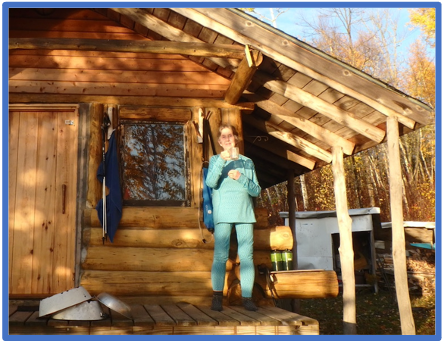
Diane Tessari (Volunteer, Supporter)
As a longtime supporter and volunteer, Diane Tessari shares her decades of experience volunteering to protect Minnesota’s waters from sulfide mining.
“The first thing I want to say is: Water is Life. It all comes back to that, doesn’t it? Water has been a theme in my life – I’m a Minnesota girl! I was born and raised here and grew up near Minnehaha Creek and Lake Harriet. I’ve always been very aware of the water around me and the watershed where I’m living. In my childhood, the best thing we did every year was going up to a lake cabin in northern Minnesota where we got to swim, boat, and just enjoy being on the water. I was outside as much as possible – until dinner or bedtime. I’ve always been very connected to the outdoors and am my happiest when I’m out there. That’s become a pattern in my life that has continued. I still visit the Boundary Waters, and enjoy the memories of past trips, both short and long. Fittingly enough, I now live by the headwaters that flow into the creek that goes by my childhood home.
“My experience standing up for water goes back a long, long way! I’ve been opposing sulfide mining since the 1970s – back when mining companies were doing mineral exploration in the Boundary Waters. I attended a big winter rally on the Gunflint Trail to celebrate when the U.S. Forest Service confiscated all of the equipment of mining company workers who had camped longer than permitted.
“For many years, I was a part of the Grandmothers Gathering for Gitchigaaming. We would gather on Madeline Island and hold positive intention for the water to be vitally healthy for seven generations and beyond. I was also involved with the Precious Waters Flotilla, where people paddled down from the Arrowhead Region to St. Paul to raise awareness of sulfide mining. After the paddlers arrived, we paraded up to the Capitol steps. I heard Paula Maccabee speak there, and I was so intrigued by her wise words that I introduced myself to her. I’ve been supporting WaterLegacy ever since.
“All the volunteering I do comes straight from my heart. I feel good about doing it – for both the organization and the environment.”
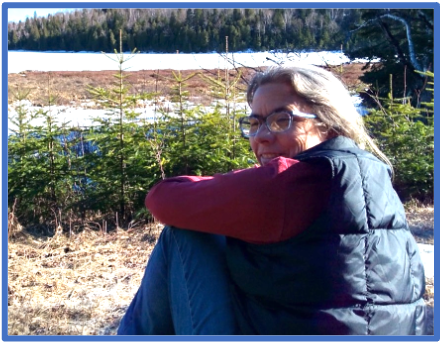
Lise Abazs (Board Treasurer)
Meet our Treasurer, Lise Abazs, a farmer who cherishes Minnesota’s clean water as essential for a sustainable future.
“I grew up in the rolling farmland west of the Twin Cities. In my youth, I occasionally went ‘up North’ with my family – to my dad’s hunting cabin in the Superior National Forest, the classic BWCA canoe trip, and skiing on the North Shore. The rugged landscape and wilderness made an impression on me, as did the giant ore boats and mounds of taconite in the Duluth Harbor. After several years of college and travel, I felt myself drawn back to my roots in Minnesota.
My husband and I found a piece of land in Finland, Minnesota, near Lake Superior, that had been a turn-of-the-century Finnish homestead. Over the past 33 years we’ve built our own homestead here that we named Round River Farm, to remind us of the natural cycles that all life depends on. We live off-road and off-grid, with solar and wind power. And we grow organic vegetables, fruits, and climate-forward tree seedlings.
Our lives revolve around the elements – the sun and earth, the wind and water. We also are deeply embedded in our community – devoting our personal and professional lives to building organizations and structures that strengthen local resilience and environmental sustainability.
Early on, one of my first jobs when I moved to this area was at a taconite plant that was just emerging from bankruptcy, so I understand the importance of the mining industry to this economy. That job was what enabled me to settle here and create the life I have now. Sulfide mining is different, though – it has risks that far outweigh any benefits.
I joined WaterLegacy’s board a decade ago, when the threat of sulfide mining was just reaching public awareness. It broke my heart that people were willing to subject an entire ecosystem to perpetual pollution for only twenty years of jobs. Rather than despair, I wanted to act. WaterLegacy has persistently pursued the scientific backing and legal arguments that can stand up to the powerful interests who have been willing to sacrifice our human and environmental health. We are holding regulatory agencies accountable and ensuring systems remain in place to keep watch. I do this for my children – for all children – and for all the living things we share this earth with – for a future where clean water will be protected as our legacy.”
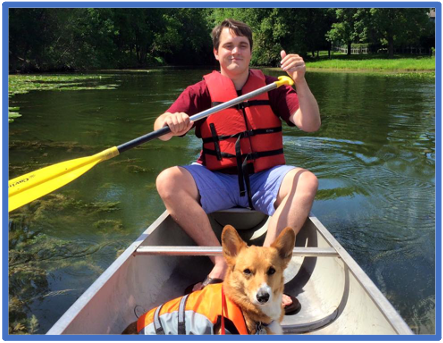
Jacob Crawford (Communications Staff)
Read about why Jacob Crawford, WaterLegacy’s Communications Coordinator and technical wizard, is committed to Minnesota’s environmental issues.
“I’ve been working on environmental issues, in one shape or form, since 2010. Before moving back to the Midwest from Denver in 2014, I connected with WaterLegacy founder Diadra Decker and got to learn about the organization and the proposed PolyMet project in Minnesota. In the years since, I have only become more resolute in my opinion (bolstered by science and fact) that sulfide mining would be disastrous for Minnesota waters and downstream communities. I have seen first-hand WaterLegacy and their coalition go up against insurmountable odds and come out victorious. I am a cynic by nature, but these experiences have instilled me with tremendous confidence in WaterLegacy and in the power/necessity of opposing polluting industries, even when faced with such odds. I have since moved to Maryland and taken a job with an environmental film festival — which highlights these kinds of stories. Even though I am no longer a Minnesota resident, I continue to have strong ties to the area. My brother lives there. My two young nephews live there. They deserve a better future for their state’s waters. They deserve to be taught, by example, that downstream and indigenous communities matter and should not be sacrificed on the altar of profits for huge multinational corporations. They deserve to grow up in a state that values science and reason and doesn’t leverage their futures over political whims. That is why I continue to work with WaterLegacy and remain committed to their cause.”
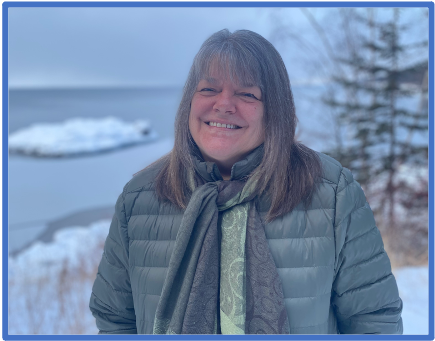
Connie Kirvida-Lehr (Board Emeritus)
Meet one of our emeritus board members up north, Connie Kirvida-Lehr, who brings her compassion and heart to WaterLegacy.
“My first exposure to WaterLegacy was my husband – he’s a geologist who was able to call out some of PolyMet’s fake promotion. When we first got out of college in 1981, we moved up to the north and decided we wanted to live there. We worked as hotel cleaners, bartenders and preschool teachers, until we figured out that it just wasn’t affordable at the time. My husband went back to graduate school, and then we lived in the Twin Cities for 20+ years. Through his knowledge, our love of the north since we were teenagers, plus the dream of living up there someday, it fueled a deep passion to protect the lakes. We wanted to do what we could to put the word out about what’s happening with the mines. It’s frustrating to be aware of the shenanigans of the government agencies. Knowing all these facts makes you want to do something. And WaterLegacy was our way to expose the mine operators, politicians, and agencies. I especially miss WaterLegacy’s social events and tabling – you’d get a tingle for two days afterwards because you’d feel so appreciated and recognized from the power of what we can do for our waters.
“It took us about 30 years to make it to the north, but now I’ve got two kids and two grandchildren who were born up here. Living here is humbling – you see something every single day that just shakes you to the core in its beauty. Right now, we’re watching all of the bobcat and rabbit tracks appear around the yard every morning. It’s what this time of year is about!”
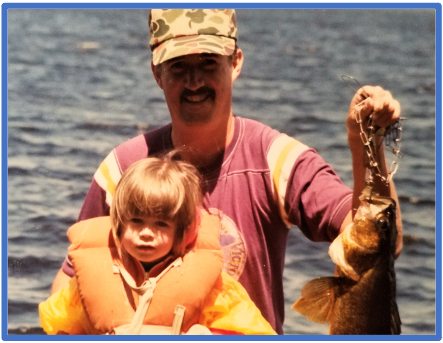
Leah Phifer (Board Member)
Leah Phifer grew up immersed in the mining industry of Northern Minnesota – read about her unique perspective on protecting clean water.
“Growing up in Northern Minnesota, my father and grandfather both worked in the taconite mining industry. It put food on my table for three generations. I know what the industry means to those who live, work and depend on the Iron Range. Decisions on where and how to mine elicit strong emotions, and I understand why, because I lived it.
“It’s all down to the basics for me – without water, we can’t survive. The COVID-19 pandemic especially has really illustrated what is essential in life. Water is one of those things.
“I support WaterLegacy because we exist to protect what is essential, and we do it through coalition building. WaterLegacy has the utmost respect for the land, water, and people of Northern Minnesota – and it shows in the way we approach our mission. We work hard to protect these essential elements, we use science and sound legal practices, and we push for better oversight and regulation.
“We advocate fiercely for these things, not to deny anyone an experience like mine growing up, but to ensure life’s most essential elements will be there for future generations.”
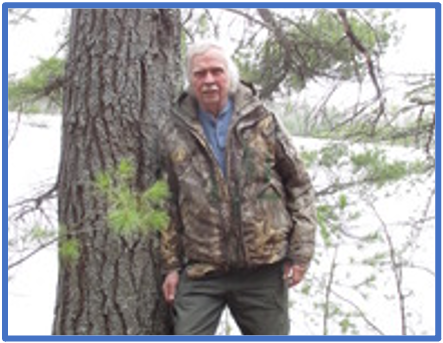
Bruce Johnson (Biology/Chemistry Expert)
Volunteer expert Bruce Johnson has dedicated his entire career to protecting water and studying the effects of mining in Minnesota.
“I was raised in the country near Savage, MN and was an only child. So, I spent lots of time with my dogs in the woods and the water. I’ve always been fascinated by water, and I remember as a kid, I got hip waders and would go out into the ‘swamp’ to look for frog eggs and tadpoles.
“Later, I went to Winona State and met my wife Maureen. I got a BA in biology and chemistry, and a BS in secondary education. Maureen was also a biology major. We’ve been together for 50 years now. Her family was originally from Ely, so we went up there many years, and we both loved the area. Her grandfather was a logger and had some property on a small lake deep in the woods. That’s been in the family since the 1930’s and has been transferred down.
“We got married in 1972, I spent many years working with the USEPA and MNDNR doing lots of chemistry and biology work on the sewage and mining impacts on water quality and sediments near Ely. During this time, I also served in the Minnesota National Guard as a chemical officer.
“Eventually, I ended up working for the MPCA where I led a technical team to enforce industrial, NPDES water quality permits, that included mining, and I stayed for 5 years. At the time, in my opinion, the MPCA Water Quality Division was beginning to backslide. I decided to leave for the Minnesota Department of Transportation (MNDOT). There I was the supervisor of the Environmental Compliance and Investigation Unit. MNDOT had many contamination issues with their properties and acquired private properties for transportation. They also maintained thousands of pieces of road maintenance machinery that produced wastes, plus they had to deal with wastes from the management of the transportation system itself. For 15 years, I worked on contamination cleanups, waste reduction and innovative waste management practices. My intent was to fully comply and exceed MPCA laws and regulations, not to argue with them, and these efforts succeeded.
“Over the years I found that environmental groups assumed that if they can get protective laws passed, the laws would be enforced. These groups didn’t know to watch how the MPCA was enforcing them. When I was with the Water Quality Division, I was hoping environmental groups would come in and push management to allow staff to make industry comply, but it was mainly industry that pushed. Today the MPCA management views industry as their “clients”, and “stakeholders” not as regulated parties. The MPCA management now views the public as nothing more than a problem to be dealt with. When we fail to adequately enforce permits, superfund cleanup sites are made and that is not in the public’s best interest. When people don’t speak up to protect the State’s water quality, neither will the MPCA.”
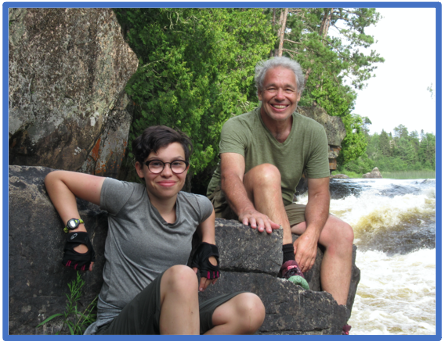
Eric Morrison (Chemistry Expert)
It’s Boundary Waters season! As your plan your summer trip, read about chemistry expert Eric Morrison’s connection to the outdoors and his work to stop sulfate pollution:
“I protect water because I think it’s genuinely a good thing to do. Back in the 60s, I began getting into the demographic of environmentally conscious people when my family started camping and volunteering at a YMCA family camp near Ely, Minnesota and my dad first took me and my friends to the BWCA. Since then, I’ve been going to the Boundary Waters once a year on average with my friend Mark, who has reinforced in me the ethic of leaving things better than when you found them or at least leaving no trace. One thing I love about the Boundary Waters is that once you’re beyond the motorized boat areas, your possessions are what you’re willing to carry and not what you can buy or what you can consume, which pretty much makes us all equals in the eyes of the lakes and trees, birds and bugs.
“In the 80s and 90s, I thought that the best things in life were free, meaning the second and following days of a BWCA trip. For $16 you can enter the pristine, beautiful wilderness and stay as long as you want – no charge. But then one day around 2010 when sulfide mining issues began to become a lot more threatening, it dawned on me that there’s no such thing as a free lunch and that the Boundary Waters had never been free. Instead, lots of other people had paid it forward by carving out a wilderness, protecting it and keeping it clean. In acknowledging that, I realize I have no option but to make good on my debt to those having gone before and then I too can pass it on. Considering all the time I’ve spent in the BWCA, the balance on my account must be staggering.
“I’m a chemist with a Ph.D. and have worked most of my career for big industry. One thing that occurs to me is that not enough of my fellow chemists are on this side of the equation. Who would have thought that the battlefield for the wilderness in the 20’s would end up being all about parts per million, cubic feet per second, and milligrams per liter? I become upset when I look at “peer-reviewed papers” that the MPCA, DNR, and mining companies use to legitimize their pollution because I flatly disagree with the science. I’ve wondered why nobody else is seeing this, and I’ve spent a lot of time trying to drag these issues into the light, into the courtroom, and to engage the public in conversation. The most concerning matter is the complicated connection between sulfate pollution and methylmercury. Due to increased mercury methylation from sulfate pollution, mercury bioaccumulates in fish, which is especially concerning for rocky bottomed Northern Minnesota lakes where the water is so clear and clean. It floors me that PolyMet received a water discharge permit that only requires them to limit pollution at one discharge site for their 30 square miles of property, and that for this site the limit on mercury is 770 times the Minnesota water quality standard. We’re on the threshold of destroying an entire region and creating a public health hazard if we accept without reservation the mining company position that the chemical relationship between sulfate and mercury is complicated therefore it won’t do any good to limit mine pollution.
“I like to think of myself as an advocate for lakes and forests and the animals that live there. And as a good friend would want for their friend to have lots of other friends, I’m looking forward to seeing more people in the BWCA, including you. Please don’t miss any opportunity to visit, and wave when you see me!”
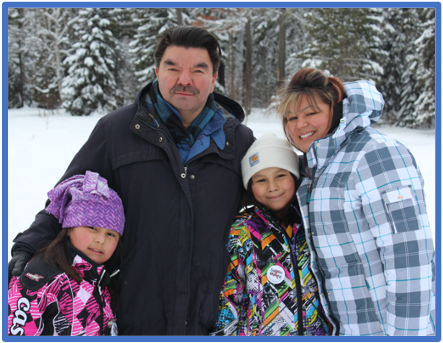
Ricky DeFoe (Board Member)
How are we all connected with water? Read WaterLegacy Board Member and Fond du Lac Band Elder Ricky DeFoe’s story below to learn about his deep connection to water and wild rice.
“Mother Earth is the source of life, and too often she is looked at as a resource. I’m an Ojibwe man, and in our culture, men tend and care for the fire. Women tend and care for the water and are life-givers. This brings some balance in two of the four elements that are crucial to life. Water is essential in the creation story of Anishinaabeg. In the creation story, we as Anishinaabe were put here in this place called Turtle Island, and the beaver, otter, loon, muskrat, and turtle were involved in the creation of Turtle Island, a.k.a. North America.
“Water is also revealed in the prophecies of the Ojibwe. The migration story from the east coast to the land where food grows on the water brings us to the wild rice area where we are now. The prophesy of seven stopping places along the migration, includes the sixth on an island in the estuary by Lake Superior called Gichi-ojibwe-gami-zibi, a.k.a. the St. Louis River. Wild rice used to be plentiful in the estuary, but you don’t see that there nowadays. You can’t even enter the water or eat many fish because it’s so contaminated.
“Water is a critical piece of Indigenous culture. When I traveled to Honduras, the Indigenous people there had much of the same world view in terms of their women and girls protecting, nurturing, and loving the water. It was profound traveling so far yet seeing how close Indigenous worldviews really are. It’s powerful to have an organization like WaterLegacy that’s defending standards and holding the government accountable, especially for the protection of wild rice.
“The greatest thing anyone can do is to serve in any fashion, whether it’s through words or being supportive of others who lead in these trying times. Sometimes we don’t know what to say or do, but when we show up a spirit comes with you. Of course, there are natural and physical laws that govern the universe and are essential for life, but the unseen spiritual laws are just as important. Live naturally to be healthy, live spiritually to be happy.”
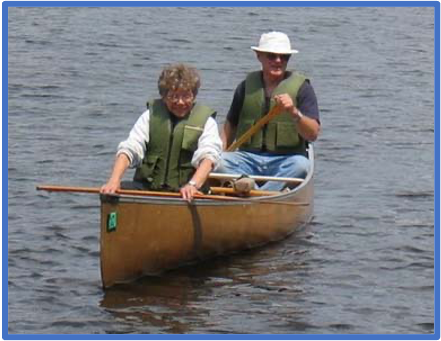
Bob Tammen (Citizen Expert)
One of WaterLegacy’s longtime supporters and citizen experts, Bob Tammen worked in Minnesota mines and now uses his knowledge about mining to protect clean water.
“We’re all about water. It started out when I was a kid, going fishing with my brother. Later, I met my wife Pat in Ely while she was teaching elementary school. We were always water people, going on canoe trips in the Boundary Waters, and I suppose that’s what started me in protecting clean water.
“In the 60s, I started working in the mines, without realizing what mining was doing to the environment. Eventually, I saw that they weren’t as clean as they claimed to be. After this realization, I felt an obligation to be an honest witness to what was really happening.
“I have a technical background in electrical work, and so I had a natural interest in conductivity. In clean water, conductivity is near zero. As you start adding elements and compounds, the conductivity increases. If the conductivity gets to a certain level, then it’s damaging to fresh water. I got myself a conductivity meter and started checking water downstream of Minnesota mines. There are six active taconite mines, and every one of them is hurting clean waters. We’ve tried to get the mines to clean up the waters, but the companies always find a way out of it. This challenge is why we support WaterLegacy. We must take legal action and bring the public in to clean up the industry’s actions.
“I’ve worked in different mining operations, and they always promote it as being good for economic development. However, communities with active mines aren’t necessarily good economic communities. Back in the 70s, I worked on the Empire Mine in upper Michigan. It was an active community. We went and visited 10 years ago, and the local school had been closed. The mine was still operating, but even with an active mine, the town couldn’t keep the school open.
“The mines claim they make a big contribution to Minnesota’s economy. Sure, mining does contribute to a certain extent, but not as much as people believe. If you tinker around on the United States Department of Commerce Bureau of Economic Analysis website, you can find that mining is currently less than 1% of Minnesota’s economy. We should be pushing a diversification of the state economy, instead of focusing on mining.
“The bottom line is: mining is damaging to our environment and is not worth the economic stress.”
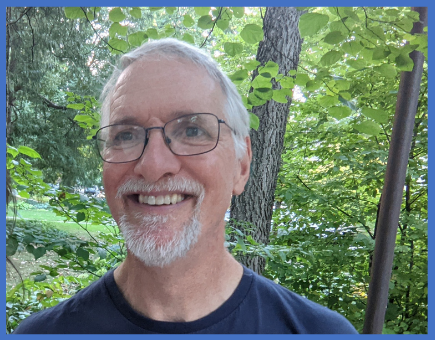
Don Arnosti (Board Member)
WaterLegacy Board member Don Arnosti has worked to protect Minnesota’s waters throughout his career, including serving as the Executive Director for Audubon Minnesota and the Minnesota Division of the Izaak Walton League.
“Water is life. Absolutely vital to life. It’s the building block of our living natural systems that I have devoted my life to improving and protecting. Years ago, I organized a coalition of people in the environmental community who were directly engaging with the DNR, MPCA, and the nonferrous mining industry to visualize the following: If nonferrous mining were to occur in Minnesota, did we have the regulatory infrastructure to control it? Clearly, the answer was no. My view is that Minnesota still has not grown up enough to permit a non-ferrous mine. We do not have the regulatory structure or backbone to actually uphold the laws we have or the public interest. We’re like a kid that has been given the keys to the car, and we don’t know how to drive.”
We need to do better. “To extract metals that we need for modern society at the cost of contaminating our water for centuries, or millennia, is wrong. When we are recycling less than half of the valuable metals that we throw away in this country every year, it’s wrong to even think about harming the Earth to get more of them. We obviously don’t value them sufficiently to bother to keep them out of the landfill. And we fail to value our water and the needs of future generations for clean water, undisturbed lands, and intact wildlife and natural systems.”
We are all advocates. “I don’t think someone has to be a chemist, or regulatory expert, or a scientist, to figure out what’s wrong and right and put forward what they want. That’s where I think everybody can get started with their environmental advocacy. Through time, you learn more about those other more detailed areas of knowledge, or associate with people who have that knowledge as they become part of what you’re lifting up and supporting.”
Reverence for all Life.“I have come to appreciate and understand the diverse wisdom represented on the WaterLegacy board. For me, the exposure to the Indigenous thought patterns and approaches is something of great value. I appreciate opening my horizons to understanding that individual life—not just human, or mammals, or large animals that we can see—but something like wild rice itself, has a right to life and a right to clean water. We need to have a reverence for life.”
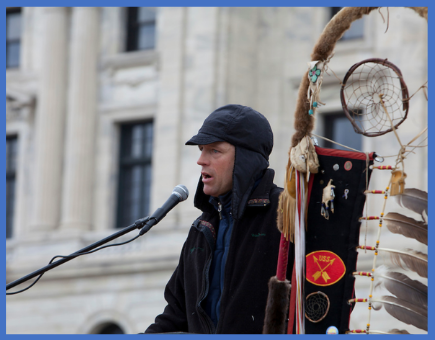
Frank Moe (Water Warrior)
Frank represented Beltrami, Cass, and Itasca counties for two terms at the State Legislature, and later served as a Cook County Commissioner. Known for his incredible energy and enthusiasm, he was an educator, an avid sled dog musher, and a champion of wild rice, water, and northern Minnesota indigenous communities. He died of brain cancer on January 12, 2022.
As a legislator, Frank authored many bills to promote the health and wellbeing of rural communities, including Minnesota’s groundbreaking law to protect natural wild rice (manoomin) from genetic modification. He was also a strong proponent of trails and outdoor recreation.
As a Cook County Commissioner, Frank passed a resolution to rename the second Monday in October Indigenous People’s Day rather than Columbus Day⎯perhaps one of the first counties in the nation to make that change.
Frank began lobbying for Prove It First legislation and caucus resolutions in 2011, insisting “Northern Minnesota’s natural heritage is not for sale.” He warned that the PolyMet/Glencore mine would create a “massive and toxic” mess, and that “when the mine is no longer profitable, it will be abandoned, leaving the state and Minnesota taxpayers with the impossible task of cleaning up the mess.”
In 2012, Frank led a team of sled dogs to St. Paul, in what he called the “Race to Protect Minnesota from Sulfide Pollution.” Frank and his team of dogs and humans brought more than 13,000 petition signatures 362 miles from Grand Marais to the Governor asking that Minnesota “deny any permits for sulfide mining that threaten Minnesota’s water or natural resources.” He documented his journey with a book and movie.
Frank taught, “Our water is everything to us. Our jobs, our food, our lives depend on it.”
Frank, may your name only be for a blessing. May the trails always be good, and may the eagle soar overhead and carry your spirit and your messages on its wings.
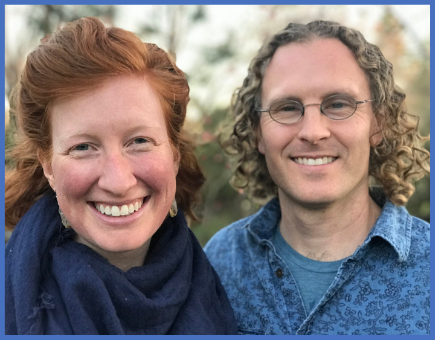
Brian James Peck & Madeline Fendrick (Musicians)
Brian James Peck and Madeline Fendrick of Fendrick & Peck are musicians who have generously donated their time and talent to support clean water.
Brian believes their commitment “goes back to the experiences we both had as children. Where water was, there was peace and play. Lake Michigan and the Root River in southeastern Wisconsin were the playgrounds and retreats for my family. I’ve many memories of walks, picnics, camping trips, cycling trips, and kayaking all within or along those waters.”
For Madeline, Lake Superior was just six miles north “as the crow flies” from her northern Wisconsin family cabin. “While there, it was—and still is today—all about the water. Besides outings to the south shore of Superior, it’s swimming in small Lake Jackman, canoeing the Brule River, or wading through the Muskeg Creek. And it would be wrong to not mention the “up north” fried fish meals, Crappie specifically, caught by the family fishers.”
Brian says, “Our individual journeys lead us away from the upper Midwest questioning, learning, witnessing the world, and eventually meeting one another. The songs that were written back then, besides the sappy love songs, were songs about water, the water we remembered. Our relationship with the waters, woods, and wildlife of the Great Lakes region is why we’ve returned and are now creating new memories with our son here in Minnesota.”
He adds, “We continue to sing about water, not to create divisions or to prove rights or wrongs, but to simply toss a pebble into a listener’s pond of memories. May we continue to love the waters around us, and may songs, like water, awaken sleepers and heal the broken hearted. We support WaterLegacy’s work because they are protecting water for future generations, both human and everyone else.”
